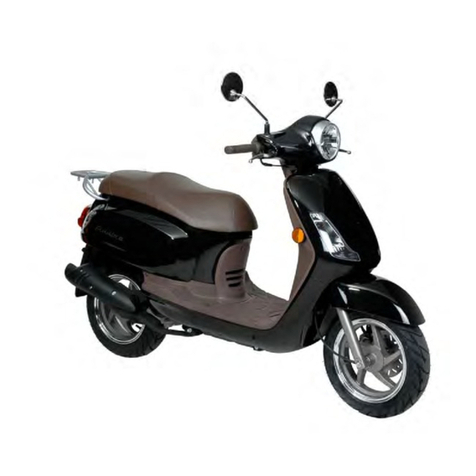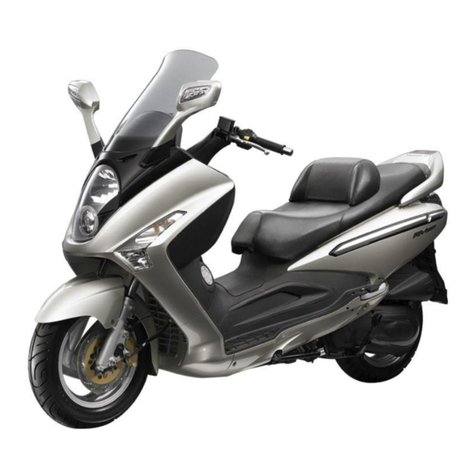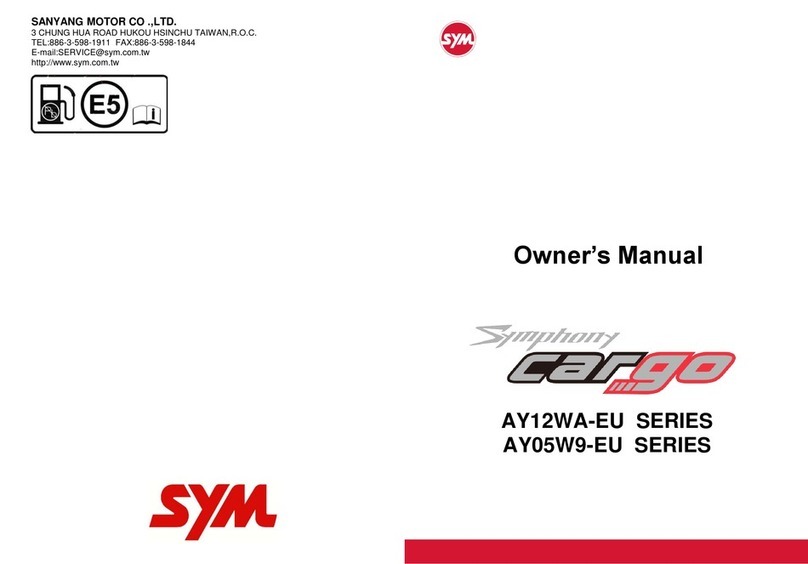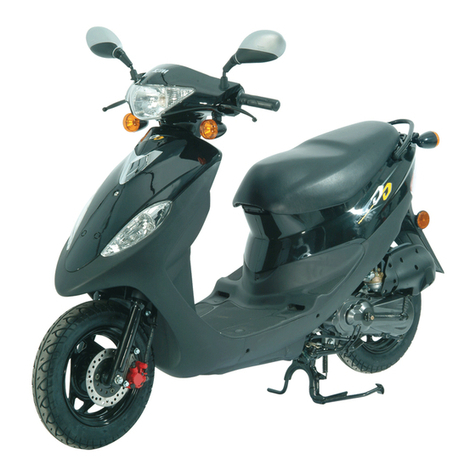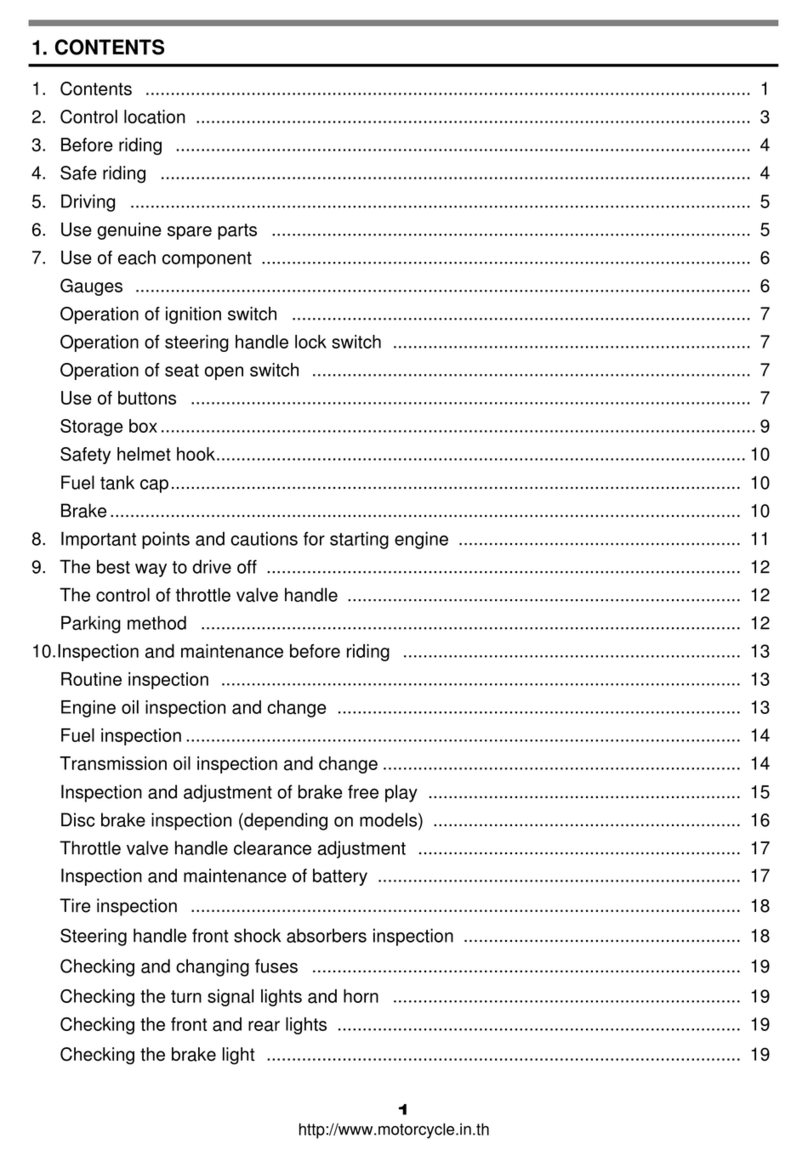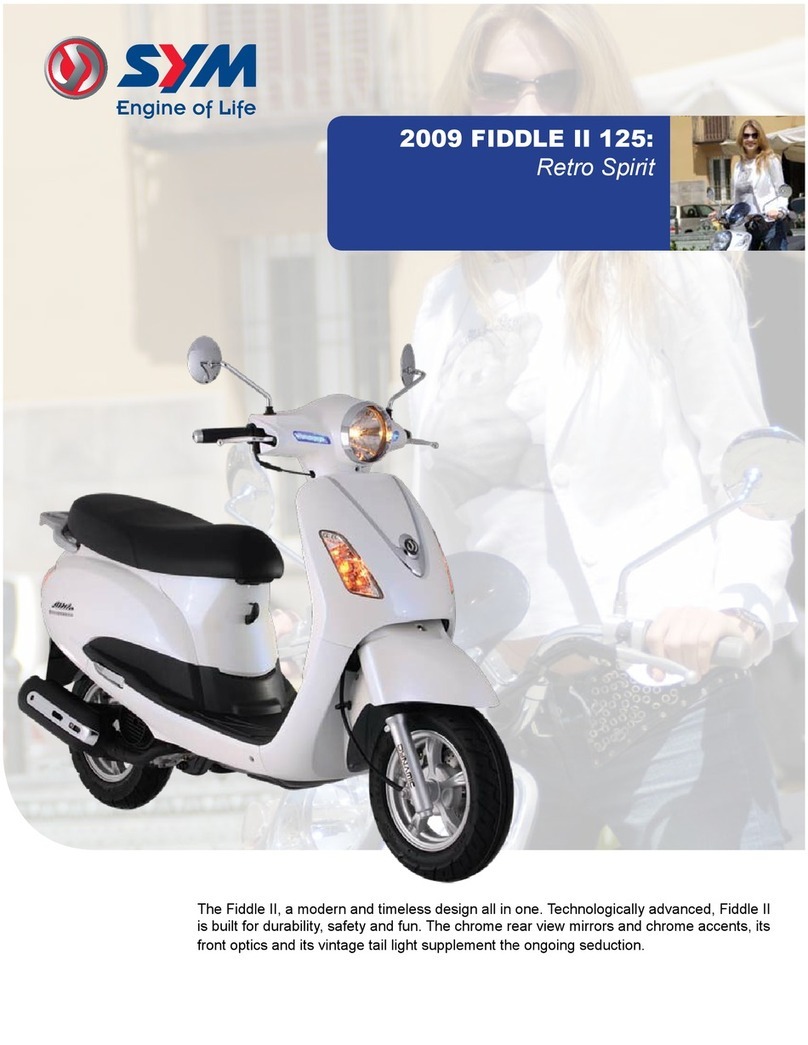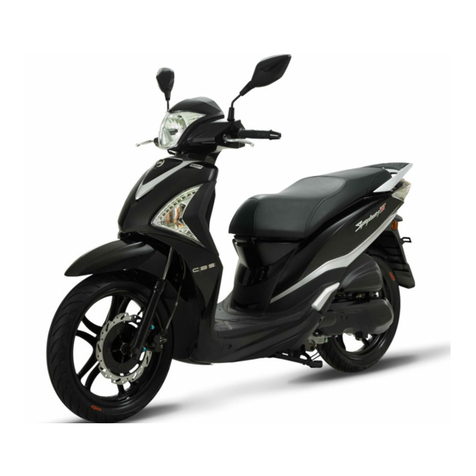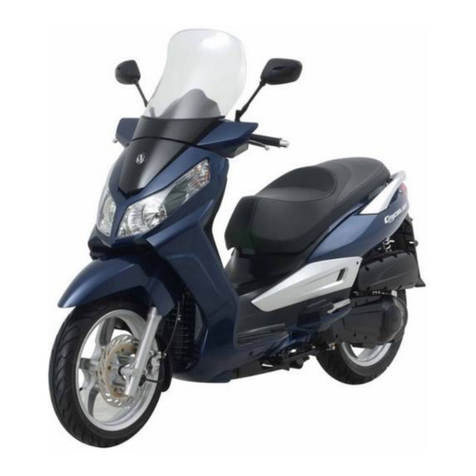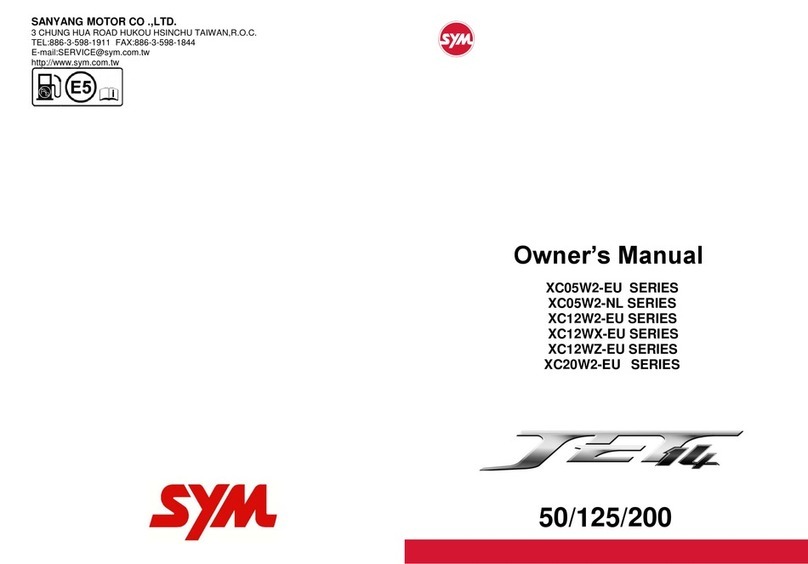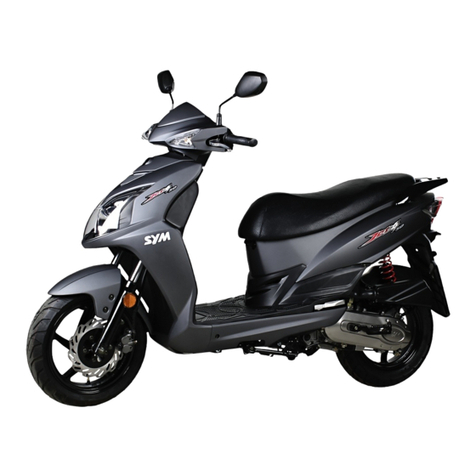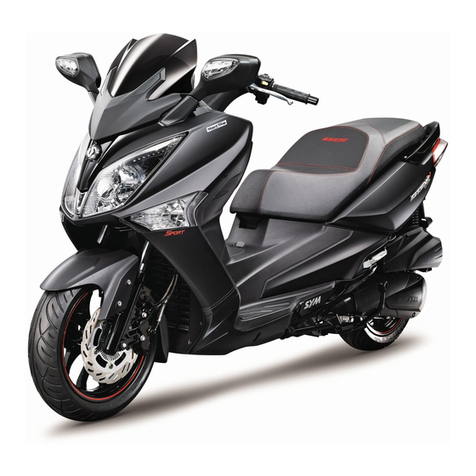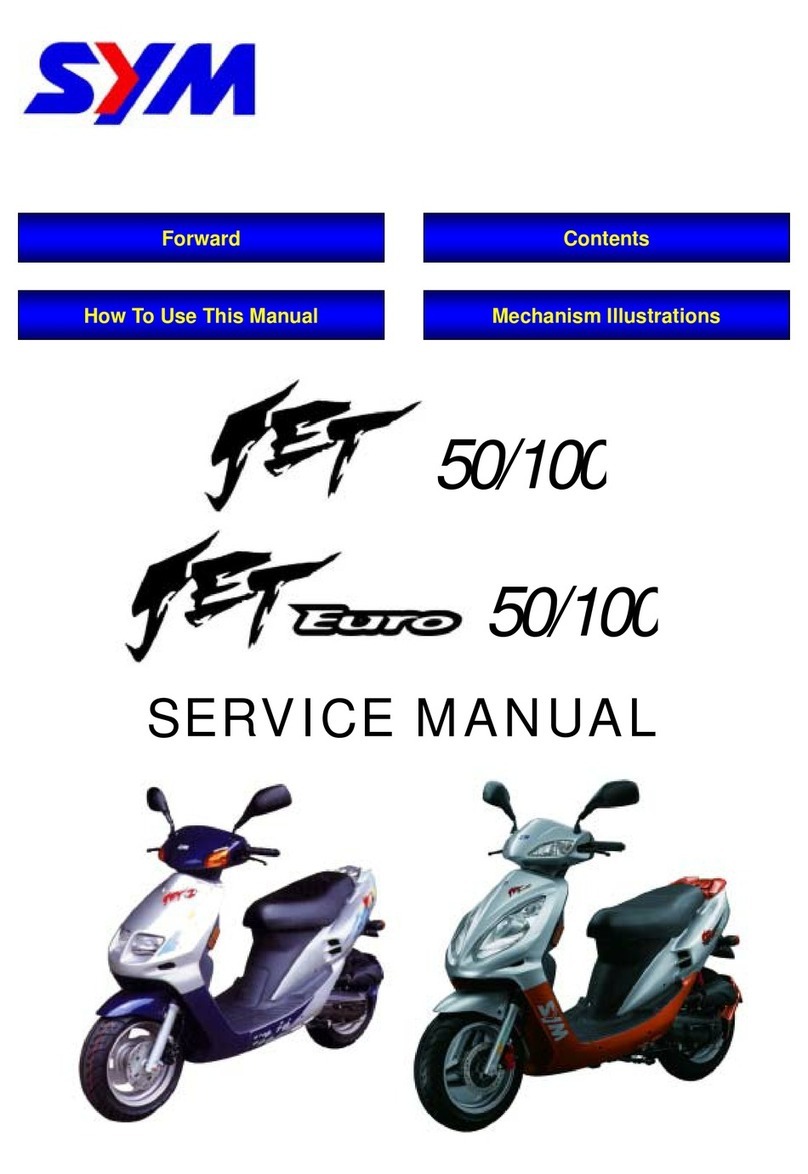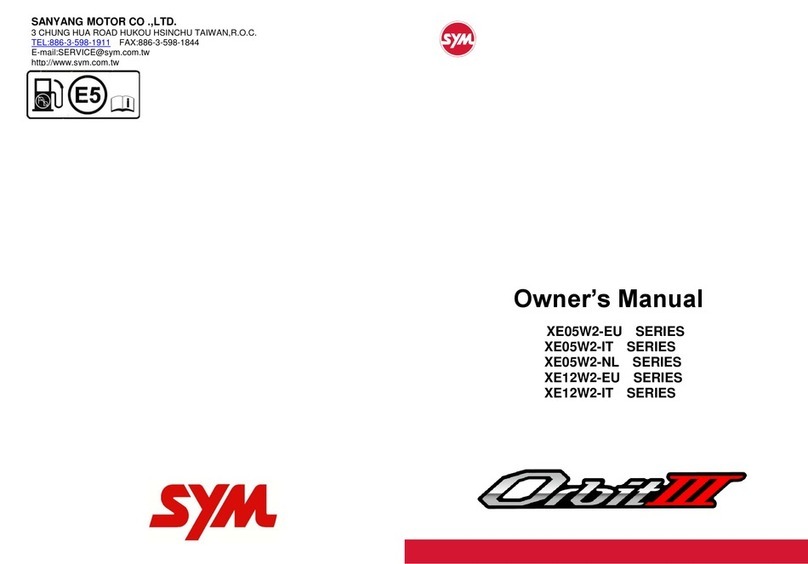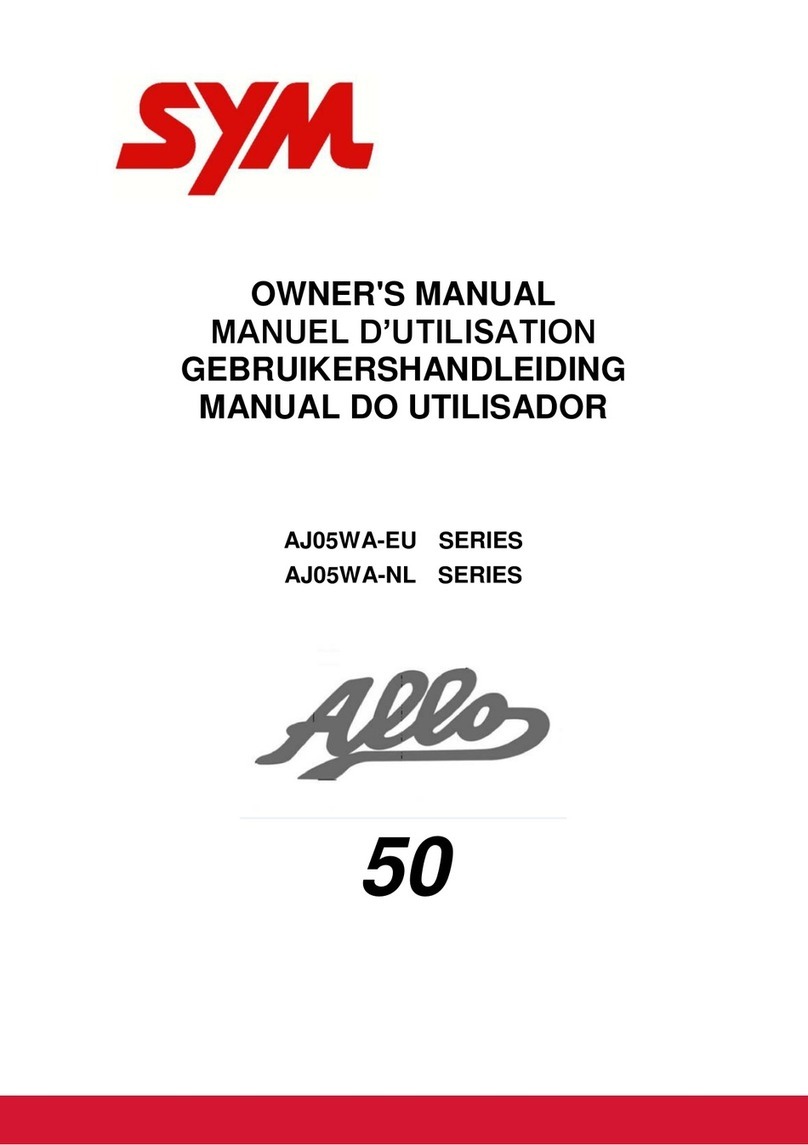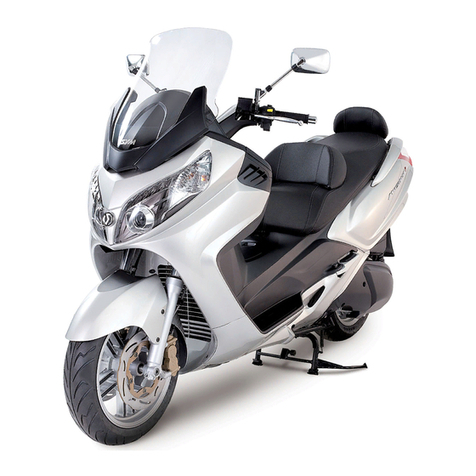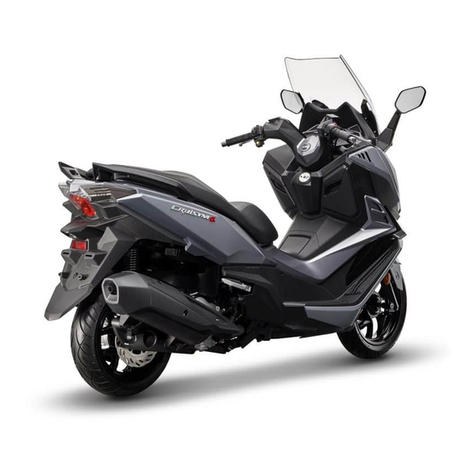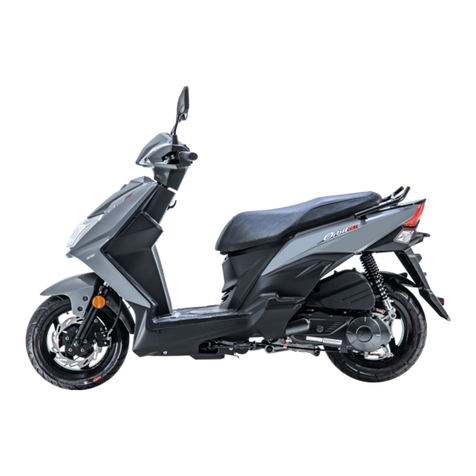4
3.BEFORE RIDING
This manual describes the correct usage of this motorcycle including safety riding, simple inspection
methods and so on.
For a more comfortable and safety riding, please read this manual carefully.
For your benefit, please ask your SYM dealer the operating manual and carefully read the following:
yCorrect use of the motorcycle.
yPre-delivery inspection and maintenance.
Thank you very much for your patronage
In order to maximize your motorcycle’s performance, a periodical inspection and maintenance
should be completely carried out.
We recommend that after riding your new motorcycle for the first 300 kilometers, you should take
your motorcycle to the original dealer for an initial inspection, and to have your motorcycle inspected
periodically every 1000 kilometers thereafter.
yIn case the motorcycle’s specifications and construction are modified and different from the photos
and diagrams on the owner’s manual / catalogues, the specifications and construction of the actual
motorcycle shall prevail.
4. SAFE RIDING
It is very important to be relaxed and clothe properly when driving, observe traffic regulations, do not rush,
always drive carefully and relaxed.
Usually, most people would ride their newly bought motorcycle very carefully, but after they became familiar
with their motorcycles, they tended to become reckless which may result in an accident.
To remind you:
yPlease wear a safety helmet, and properly tighten the chin belt when riding a motorcycle.
yClothes with open or loose cuffs may be blown by wind and cause the cuffs to get caught on the
steering handle and thus affects riding safety.
ySo, put on clothes with tight sleeves.
yHold the steering handle by both hands when riding. Never ride with only one hand.
yObserve the speed limit.
yWear suitable low-heel shoes.
yPerform periodical maintenance and inspection in accordance with the schedule.
WARNING!!
yTo avoid getting burned by exhaust pipe when taking a passenger. Make sure your passenger has
put his/her feet on the pedals.
yAfter running, the exhaust pipe is very hot, be careful not to get burned when conducting an
inspection or maintenance.
yAfter running, the exhaust pipe is very hot, select a suitable location to park your motorcycle to avoid
others getting burned by the exhaust pipe.
CAUTION:
Modified motorcycle will affect its structure or performance, and cause poor engine operation or
exhaust noise, which will result in shortening the motorcycle’s service life.
Besides, modification is illegal and does not conform to the original design and specifications.
A modified motorcycle will not be covered by warranty; therefore, do not modify your motorcycle at
will.
